Papers by Karen Refsgaard

New Biotechnology, 2021
The bioeconomy is generally conceived as an economy based on land- and marine-based natural resou... more The bioeconomy is generally conceived as an economy based on land- and marine-based natural resources including eco-system services and biowaste. The dominant research has focused on the resource approach, i.e. the supply of different biomass products and services. Less emphasis has been put on the products and services stemming from the bioresources and the value differences these may have for individual entrepreneurs, for circular economy clusters or for municipalities and regions. This article is a first attempt for a more comprehensive assessment of regional economic and social impacts of the new bioeconomy in the Nordic countries. Combining employment statistics and empirical cases, we show how the new bioeconomy makes important contributions to more environmentally and socially sustainable economic growth, particularly in the rural areas of the Nordics. The data and cases show the importance of the regional and local levels in creating the new institutional structures for cooperation between firms and public authorities that pave the way for successful synergistic clusters. Such clusters allow for a reduction in waste streams and the replacement of fossil fuels and other inputs, while also creating significant local added value, local jobs and reducing climate emissions.
Model-Based Approaches to Learning, 2009
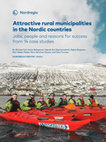
is a leading Nordic and European research centre for regional development and planning, establish... more is a leading Nordic and European research centre for regional development and planning, established by the Nordic Council of Ministers in 1997. We conduct solution-oriented and applied research, addressing current issues from both a research perspective and the viewpoint of policymakers and practitioners. Operating at the international, national, regional and local levels, Nordregio's research covers a wide geographic scope, with an emphasis on the Nordic and Baltic Sea Regions, Europe and the Arctic. The Nordic cooperation Nordic cooperation is one of the world's most extensive forms of regional collaboration, involving Denmark, Finland, Iceland, Norway, Sweden, and the Faroe Islands, Greenland, and Åland. Nordic cooperation has firm traditions in politics, the economy, and culture. It plays an important role in European and international collaboration, and aims at creating a strong Nordic community in a strong Europe. Nordic cooperation seeks to safeguard Nordic and regional interests and principles in the global community. Common Nordic values help the region solidify its position as one of the world's most innovative and competitive. The Nordic Council of Ministers is a forum of cooperation between the Nordic governments. The Nordic Council of Ministers implements Nordic cooperation. The prime ministers have the overall responsibility. Its activities are coordinated by the Nordic ministers for cooperation , the Nordic Committee for cooperation and portfolio ministers. Founded in 1971. The Nordic Council is a forum for cooperation between the Nordic parliaments and governments. The Council consists of 87 parliamentarians from the Nordic countries. The Nordic Council takes policy initiative s and monitors Nordic cooperation. Founded in 1952.

Journal of Physics B: Atomic and Molecular Physics, 1983
ABSTRACT Collision-induced coherent S to D excitation is investigated. A polarisation analysis of... more ABSTRACT Collision-induced coherent S to D excitation is investigated. A polarisation analysis of the subsequent D to P transition by the photon-particle coincidence method is not sufficient to completely determine the excitation amplitudes for the D state. Two distinct solutions are obtained. The electron distributions associated with these two are mirror images of one another in the plane determined by the normal to the scattering plane and the direction of maximum intensity of linearly polarised light, as measured from the direction of the normal. The Li(2s to 3d) excitation induced by collisions with helium is studied both theoretically and experimentally in the keV energy range. The measurements confirm the existence of a theoretically predicted low-energy structure in the circular polarisation. The results are interpreted by generalising concepts previously developed for S to P excitation in quasi-one-electron systems.
The paper puts emphasis on the fact that institutional structures and path dependency can be and ... more The paper puts emphasis on the fact that institutional structures and path dependency can be and are major constraints for development and dissemination of many innovations that have obvious environmental benefits in the long run. Facilitation and arrangement of appropriate institutional regimes are therefore of great importance for "big ideas" to come through. Ecological sanitation is an example.

Litt om NILF Forskning og utredning angående landbrukspolitikk, matvaresektor og-marked, foreta... more Litt om NILF Forskning og utredning angående landbrukspolitikk, matvaresektor og-marked, foretaksøkonomi, naerings-og bygdeutvikling. Utarbeider naerings-og foretaksøkonomisk dokumentasjon innen landbruket; dette omfatter bl.a. sekretariatsarbeidet for Budsjettnemnda for jordbruket og de årlige driftsgranskingene i jord-og skogbruk. Utvikler hjelpemidler for driftsplanlegging og regnskapsføring. Finansieres av Landbruks-og matdepartementet, Norges forskningsråd og gjennom oppdrag for offentlig og privat sektor. Hovedkontor i Oslo og distriktskontor i Bergen, Trondheim og Bodø. iii Forord Fylkesmennene i Østfold, Oslo og Akershus samt Statens landbruksforvaltning har vaert oppdragsgivere for dette prosjektet som har vaert gjennomført i perioden 1.april 2009 til 1. mai 2010. Utgangspunktet for denne undersøkelsen var at Fylkesmennene i Oslo, Østfold og Akershus, samt Landbrukskontoret i Follo etterlyste et bedre grunnlag for beregning av kostnadseffektivitet for ulike tiltak innenfor landbrukssektoren. Arbeid med Rammedirektivet for Vann (RDV) var igangsatt med tiltaksanalyser for flere vannområder i disse fylkene og skapte behov for slike beregninger. Fylkesmennene ønsket å fokusere på kornområdene, da disse arealene utgjør ca. 90 prosent av jordbruksarealene. En ønsket å vurdere ulike tiltak for å redusere avrenning av fosfor til vann og vassdrag i Vannregion Glomma og hvilke kostnader jordbruket har ved endret drift, for eksempel endring fra høstkorn til vårkorn, eller fra høstpløying til redusert jordarbeiding. Det var et ønske å kunne vurdere kostnader ved tiltak for hvert av vannområdene og kostnadseffektivitet for de ulike tiltakene. Prosjektet er gjennomført i samarbeid mellom NILF og Bioforsk Jord og miljø. Karen Refsgaard ved NILF har vaert prosjektleder. Prosjektets deltakere har for øvrig vaert: Fra NILF: Asbjørn Veidal. Fra Bioforsk Jord og miljø: Marianne Bechmann, Anne-Grete Buseth Blankenberg og Svein Skøien. Kvalitetssikrer for prosjektet og for rapporten er John M. Bryden, NILF-som har gitt verdifulle bidrag til teori, metode og gjennomføring. Prosjektet har hatt en referansegruppe bestående av: Statens landbruksforvaltning
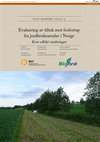
NILF utgir en rekke publikasjoner Årlig utkommer: «driftsgranskingar i jord-og skogbruk» «handbok... more NILF utgir en rekke publikasjoner Årlig utkommer: «driftsgranskingar i jord-og skogbruk» «handbok for driftsplanlegging» «utsyn over norsk landbruk. tilstand og utviklingstrekk». «Mat og industri. status og utvikling i norsk matindustri». resultater fra forskning og utredninger utgis i tre serier: «Nilf-rapport»-en serie for publisering av forskningsrapporter og resultater fra større utredninger «Notat»-en serie for publisering av arbeidsnotater, delrapporter, foredrag m.m. samt sluttrapporter fra mindre prosjekter. «discussion paper»-en serie for publisering av foreløpige resultater (bare internettpublisering). Nilf gir også ut: «dagligvarehandel og mat» regionale dekningsbidragskalkylar. Nilf er sekretariat for Budsjettnemnda for jordbruket som årlig gir ut: «totalkalkylen for jordbruket» (jordbrukets totalregnskap og budsjett) «referansebruksberegninger» «resultatkontroll for gjennomføringen av landbrukspolitikken» «Volum-og prisindeksar for jordbruket» som ligger på:

Innovation and Development, 2017
In this introduction to the special issue on inclusive innovation in the bioeconomy, the authors ... more In this introduction to the special issue on inclusive innovation in the bioeconomy, the authors highlight inclusive innovation's significance to economies that provide the vital resources of food, water, and energy. Innovation in the bioeconomy raises questions of environmental sustainability, human survival, social justice, and human rights. This article thus emphasizes, especially, the roles that institutions play regarding innovation in the bioeconomy. The authors suggest that inclusive innovation be defined as new ways of improving the lives of the most needy. They outline research implications of this definition, and relate these implications to debates about the modes and ethics of innovation. They argue that innovation systems' design affects these systems' potential for inclusiveness as well as their value premises. Finally, the contributions to this special issue are introduced and discussed in light of the special issue's overall purpose and framework.
Innovation and Development, 2017
In this paper, we apply grounded innovation platforms (GRIPs) as a tool for inclusive innovation ... more In this paper, we apply grounded innovation platforms (GRIPs) as a tool for inclusive innovation in relation to forest-based bioenergy in Norway. We use cases studied in the Triple Bottom Line Outcomes for Bioenergy Development and Innovation in Rural Norway research project. We review the notion of GRIPs and classify them. We analyse forms of GRIPs and the hypothesis that forms of GRIP affect 'triple bottom line' outcomes of sustainable development. We relate our findings to the debates on inclusive innovation, which we argue is not simply an issue for 'developing countries'. Development, being understood to be different from economic growth, is concerned with inclusion and exclusion, and, in a world of growing inequalities, is a universal issue everywhere.
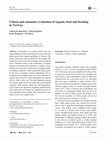
Organic Agriculture, 2017
In this paper, we examine citizen and consumer attitudes towards, and preferences for, private an... more In this paper, we examine citizen and consumer attitudes towards, and preferences for, private and public goods from organic agriculture in Norway. The study is based on a survey among 939 Norwegians. The results show that in the role as citizens, the respondents hold a moderate belief in the superiority of organic farming concerning the production of public goods, but they give relatively low priority to prompting organic farming compared to other agricultural policy goals. In the role as consumers (choice experiment), the respondents were willing to pay for several attributes of organic food. Only 6% of the respondents buy organic food as often as they can. The most important reasons for buying organic food are health and environmental concerns, while animal welfare has little importance. Lack of perceived superiority regarding health benefits, taste, safety and environment are important reasons for not consuming (more) organic food among those who rarely or never buy organic food.







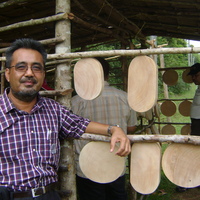


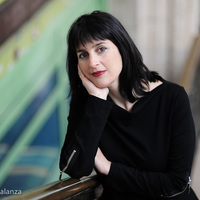
Uploads
Papers by Karen Refsgaard